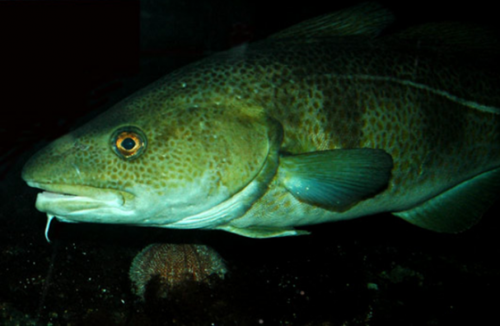The regulation of puberty and maturation in cod

FSH and LH are two important hormones which regulate the processes of puberty and maturation. These hormones are secreted by the pituitary gland and are transported in the blood to the genitalia, where they regulate maturation.
How the secretion of FSH and LH is regulated is not known in detail, but studies of these hormones in fish have revealed certain characteristics of the cells producing the hormones which can help to explain the differentiated regulation of FSH and LH.
Lack of control on puberty and maturation is a serious problem in intensive fish farming. Kjetil Hodne's PhD project has studied the mechanisms behind the differentiated synthesis and release of the pituitary hormones follicle-stimulating hormone (FSH) and luteinizing hormone (LH), which regulate maturation. Hodne used fish (cod) as a model because unlike in other vertebrates, these hormones are produced in two different types of cells in fish.
We still do not know how puberty begins in vertebrates. The process is complex and largely governed by genetics. In both mammals and fish, genetic regulation is however affected by external factors, which finely adjust the exact time for the transition from immaturity to adulthood. FSH and LH are essential to the maturation of all vertebrates.
The brain secretes the gonadotropin-releasing hormone GnRH, which in turn stimulates the pituitary gland to release FSH and LH into the blood. Both FSH and LH affect the genitalia, but during different phases. FSH is most important during the early stage of maturation, while LH plays a more decisive role during the final stages. How this differentiated regulation occurs is not known, partly because both hormones are produced in the same type of cell in all mammals, including humans. But in fish, FSH and LH are produced in two different types of cells and this allows separate studies to be carried out in order to ascertain how the regulation of FSH and LH takes place.
When using fish as a model, it was necessary to develop several new methods, for instance one to cultivate fish pituitary cells outside the body of the fish. Hodne's thesis also describes a method of safely identifying FSH and LH-expressing cells respectively. This was achieved by extracting the content of the cell (cytosol) and then conducting PCR analyses in order to identify which genes are turned on in the cell.
The secretion of FSH and LH is triggered by an increased level of calcium ions (Ca2+) in the cell's cytosol. Ca2+ can either be released from stores inside the cell itself, or enter the cell from outside. One of the main aims of Hodne's research was to clarify how the two types of cells regulate the inflow of Ca2+ via ion channels in the cell membrane. Most of the ion channels are selectively permeable for certain types of ion, but some are only penetrable to Ca2+. In addition, there are many other ion channels that finely adjust how much Ca2+ is allowed into the cell. These "braking channels" are activated by Ca2+. Hodne discovered that FSH and LH-expressing cells consist of different compositions of braking channels and that this composition is actively regulated throughout the various phases of maturation. This means that the secretion of FSH and LH is probably also influenced by the mechanism regulating the braking channels.
Hodne carried out his doctoral research at the Norwegian School of Veterinary Science and the University of Oslo. Kjetil Hodne, Master of Science, defended his PhD at the Norwegian School of Veterinary Science on 15th February 2013 with a thesis entitled "Electrophysiological characterization offshb- and lhb-expressing cells in the Atlantic cod (Gadus morhua)".















